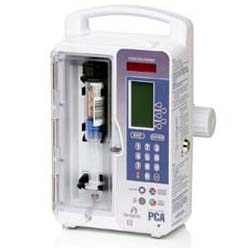 You have control over your own body, right? Well, scary scenarios in the healthcare industry are increasing in awareness. In the past, with the growth of technology, hacking was just for computers, but now it is expanding to other devices including medical ones. This is not technically “cyber crime”, but can easily turn into it when it falls into the wrong hands so I’m going to cover it anyways.
You have control over your own body, right? Well, scary scenarios in the healthcare industry are increasing in awareness. In the past, with the growth of technology, hacking was just for computers, but now it is expanding to other devices including medical ones. This is not technically “cyber crime”, but can easily turn into it when it falls into the wrong hands so I’m going to cover it anyways.
Internet of Things (IoT): “refers to scenarios where network connectivity and computing capability extends to objects, sensors and everyday items not normally considered computers, allowing these devices to generate, exchange and consume data with minimal human intervention. There is, however, no single, universal definition” (Internet Society, 2015).
The IoT is an important aspect in the healthcare industry (recently the term Internet of Healthcare Things IoHT was coined by medical field personnel). Examples include; heart rate monitors, pacemakers, medicine drips, MRI, etc. all that connect to the Internet and record information. As most of us know, objects that are connected to the Internet or have computer-type technology can be hacked. One example of this was two men in Austria hacked their morphine pump while admitted to the hospital to boost the dosage (Sarvestani, 2014). This resulted in one going into respiratory arrest and both men becoming addicted to morphine (Sarvestani, 2014). They were able to achieve this by retrieving the machine’s control codes online, this information typically can be found in the device manuals that are online for user reference.
A more streamlined, dangerous version of the morphine pump hack is what is known as MEDJACK. MEDJACK is a “medical device hijack” (Carman, 2015). How is this done? Don’t these hospitals have firewalls and preventative measures for stuff like this? Yes and no. While the network itself and it’s computers are protected with firewall and other security the devices themselves are not secured. According to Ashley Carman at SC Magazine “attackers maneuver though healthcare systems’ main networks by initially exploiting outdated and unpatched medical devices, such as an X-ray scanner or blood gas analyzer. They build backdoors into the systems through these internet-connected devices” (2015).
Another way that this is done is through a tool known as Shodan that is “used to scan open ports on the internet is often used by security researchers to uncover critical exposed infrastructure that should be better protected” (Murdock, 2016). According to a Kaspersky researcher in Jason Murdock’s article “[Shodan] can find out about the hardware and software connected [to the internet] and if you know, for example, what feedback an MRI or laser or cardiology device gives when you connect to its port, you can go to Shodan and find hundreds of these devices and if you know a vulnerability you can hack all of them” (2016).
 Unfortunately, it gets worse. Pacemakers, including ones that are fully installed, are now on the list of hackable equipment. Students at University of South Alabama hacked into iStan, a simulated human being device (Storm, 2015). IStan has “internal robotics that mimic human cardiovascular, respiratory and neurological systems. When iStan bleeds, his blood pressure, heart rate and other clinical signs change automatically.” iStan, which is used by USA’s College of Nursing, breaths, bleeds from two locations, cries, secretes bodily fluids, speaks, groans, wheezes, gags, gasps, coughs and mumbles” (Storm, 2015) allowing it to fully respond as a human being. These students hacked into the iStan and were able to launch a brute force attack and denial of service (DoS) attacks which interfered with the devices ability to function, which in turn “killed” iStan (Storm, 2015). Another source discussing pacemaker hacking is Tarun Wadhwa on Forbes. Wadhwa discussed how pacemakers are vulnerable:
Unfortunately, it gets worse. Pacemakers, including ones that are fully installed, are now on the list of hackable equipment. Students at University of South Alabama hacked into iStan, a simulated human being device (Storm, 2015). IStan has “internal robotics that mimic human cardiovascular, respiratory and neurological systems. When iStan bleeds, his blood pressure, heart rate and other clinical signs change automatically.” iStan, which is used by USA’s College of Nursing, breaths, bleeds from two locations, cries, secretes bodily fluids, speaks, groans, wheezes, gags, gasps, coughs and mumbles” (Storm, 2015) allowing it to fully respond as a human being. These students hacked into the iStan and were able to launch a brute force attack and denial of service (DoS) attacks which interfered with the devices ability to function, which in turn “killed” iStan (Storm, 2015). Another source discussing pacemaker hacking is Tarun Wadhwa on Forbes. Wadhwa discussed how pacemakers are vulnerable:
“Implanted devices have been around for decades, but only in the last few years have these devices become virtually accessible. While they allow for doctors to collect valuable data, many of these devices were distributed without any type of encryption or defensive mechanisms in place. Unlike a regular electronic device that can be loaded with new firmware, medical devices are embedded inside the body and require surgery for “full” updates. One of the greatest constraints to adding additional security features is the very limited amount of battery power available” (2012)
Thankfully though, there has been no recorded incident of intended harm to another individual (and a very small amount of incidents of harm to oneself) through medical device hacking. The basics? If you can, do some research into the devices being used in your hospital room to see what vulnerabilities are available on the web (through how-to’s, videos, device manuals, etc.) and if at all possible, stay healthy to avoid the hospital- I wish this for everyone!
(THIS POST IS NOT INTENDED TO INDUCE FEAR, ANGER, OR ANY OTHER EMOTION TOWARDS MEDICAL PERSONNEL, STAFF, HOSPITALS, IT STAFF, EQUIPMENT DEVELOPMENT, OR OTHER GROUP OF INDIVIDUALS HANDLING, PRODUCING, USING, UPDATING, OR INVOLVED IN MEDICAL DEVICES)
[Editors note: Maybe it SHOULD though… induce fear that is. -The Code Curmudgeon]
References:
Carman, A. (2014, June 4). ‘MEDJACK’ tactic allows cyber criminals to enter healthcare networks undetected. SC Magazine. Retrieved from http://www.scmagazine.com/trapx-profiles-medjack-threat/article/418811/
Internet Society. (2015, October). The Internet of Things: An overview. InternetSociety.org. Retrieved from https://www.internetsociety.org/sites/default/files/ISOC-IoT-Overview-20151014_0.pdf
Murdock, J. (2016, February 15). How a security researcher easily hacked a hospital and its medical devices. International Business Times. Retrieved from http://www.ibtimes.co.uk/ho w-security-researcher-easily-hacked-hospital-its-medical-devices-1544002
Sarvestani, A. (2014, August 15). Hospital patient hacks his own morphine pump. MassDevice.com On Call. Retrieved from http://www.massdevice.com/hospital-patient-hacks-his-own-morphine-pump-massdevicecom-call/
Storm, D. (2015, September 8). Researchers hack a pacemaker, kill a man(nequin). Computer World. Retrieved from http://www.computerworld.com/article/2981527/cybercri me-hacking/researchers-hack-a-pacemaker-kill-a-man-nequin.html
Wadhwa, T. (2012, December 6). Yes, you can hack a pacemaker (and other medical devices too). Forbes. Retrieved from http://www.forbes.com/sites/singularity/2012/12/06/yes-you-can-hack-a-pacemaker-and-other-medical-devices-too/#5ab6b78313e0

My cousin in law is on a pace maker, it is terrifying that medical equipment is now able to be hacked. It makes me so sad that somebody was really able to hack into Stan’s device and were able to kill him. How are we suppose to protect our loved ones from this
Not only RAT’s are hard to detect, any malicious programs are when the hacker behind can buy / code their own material to make it stealth and undetected.
They coded a poly crypter few years ago for my official penetration testing and still can make undetectable any programs including of course RAT’s / Viruses / Worms etc.. i did this using the help of darkwebsolutions dot co, they have the best materials.